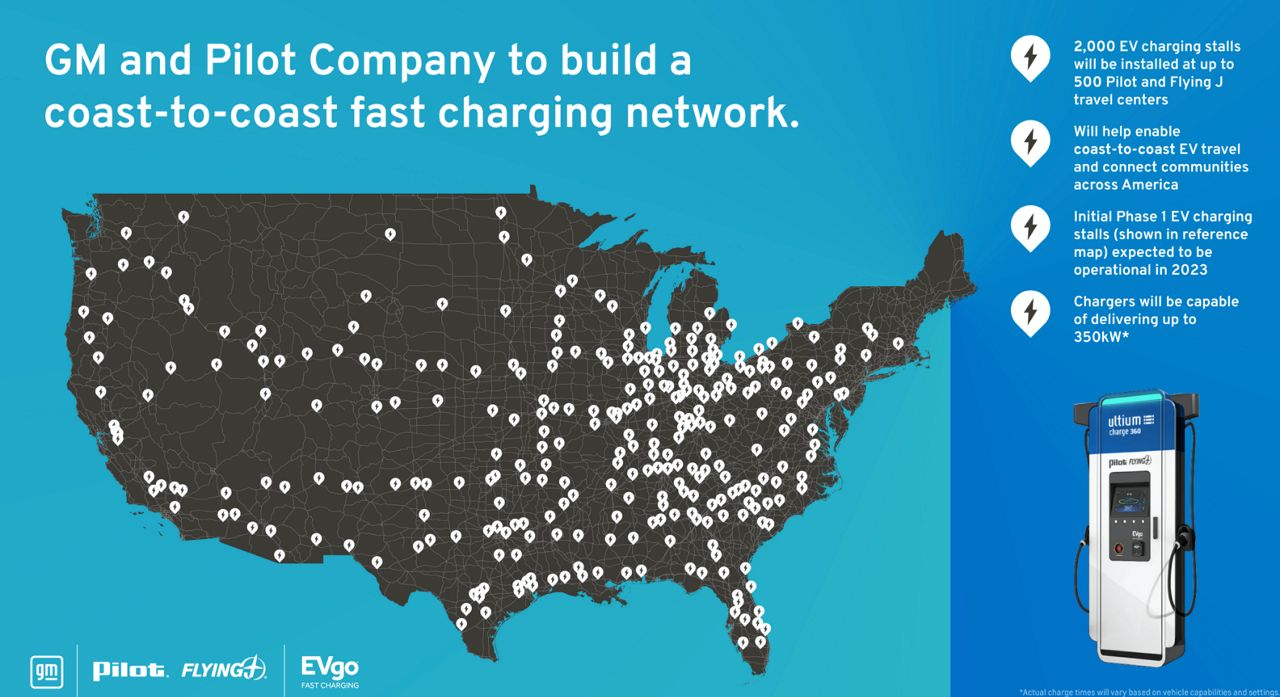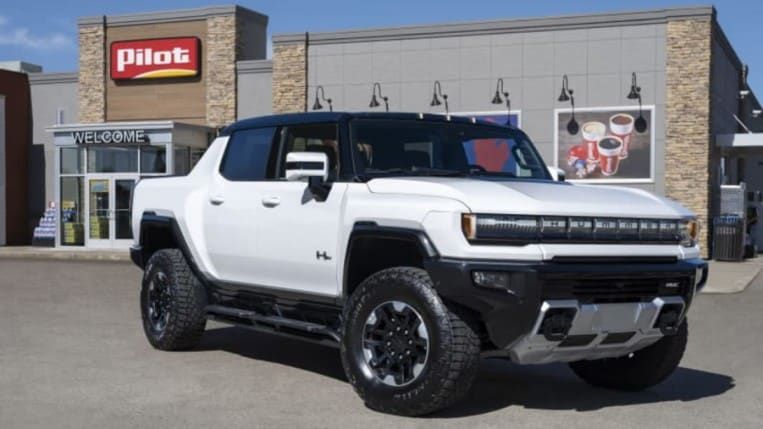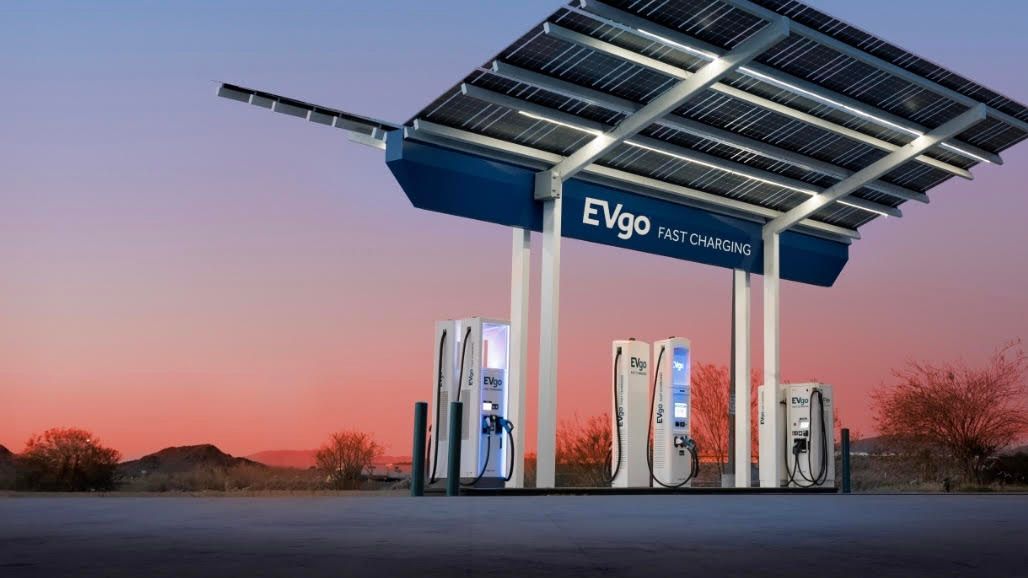NATIONWIDE — As General Motors accelerates production of its Hummer electric vehicle, the Detroit automaker announced Thursday that it plans to build a coast-to-coast fast-charging network. Created in partnership with Pilot Company and its Flying J travel centers, the network will consist of 2,000 fast chargers co-branded as Pilot Flying J and Ultium Charge 360.
“There’s home charging and charging in the urban environment,” General Motors Vice President of EV Growth Operations told Spectrum News. “The part that’s been missing is really great infrastructure through the U.S. freeway system, and that’s what this will really deliver.”
Installed at 50-mile intervals across the U.S., each EV station will include at least four charging stalls that can add up to 15 miles of charge per minute. All of the charging sites will use 350-kilowatt chargers — the fastest currently available. Many of the sites will let drivers of EVs with trailers pull through a charging station rather than back in and out of a parking spot.
While the exact number of chargers at each location will be based on utilization and is currently being determined, Hester expects the fast-charging network to be completed in early 2023.

The chargers will be accessible to EVs from all brands at 500 Flying J travel centers, situated along U.S. highways that connect urban and rural areas throughout the country from coast to coast. GM drivers will be able to make reservations, receive discounts on charging and enjoy a system that instantly recognizes their car, negating the need to use a credit card. The Ultium Charge 360 network also integrates with GM’s different brand apps to show real-time charger availability and navigation to 11 other brands of charging stations, such as ChargePoint.
“We know through interactions with our customers that for them to get confidence going outside their communities with long-distance trips, people like the confidence of charging infrastructure every 50 miles,” Hester said, adding that some GM EVs can travel about 400 miles per charge.

GM says 78% of the continental U.S. Interstate system is within 10 miles of a Pilot or Flying J.
The automaker’s goal is to accelerate EV adoption by increasing access to charging that enables long-distance travel. It has been working with Pilot, Flying J and EVGo for the past six months, leveraging Pilot’s status as the country’s largest operator of interstate travel centers servicing 1.5 million customers daily and EVGo’s ranking as the nation’s largest public fast-charging network, with more than 850 charging locations in more than 30 states.
The GM EV charging network will be installed, operated and maintained by EVGo. In addition to the Pilot Flying J charging network, EVGo has partnered with General Motors to install more than 3,250 fast chargers in U.S. cities and suburbs by 2025.
“We are committed to an all-electric, zero-emissions future, and ensuring that the right charging infrastructure is in place is a key piece of the puzzle,” GM Chief Executive Mary Barra said in a statement.
In 2021, Barra announced the company planned to phase out gas-powered vehicles by 2035. It currently makes four battery electric passenger vehicles, including the Chevy Bolt EV and EUV, Hummer EV and Cadillac Lyriq. Plug-in versions of the Chevy Silverado, Blazer and Equinox will be available next year as part of GM's plan to bring 30 new EVs to market by 2025.
